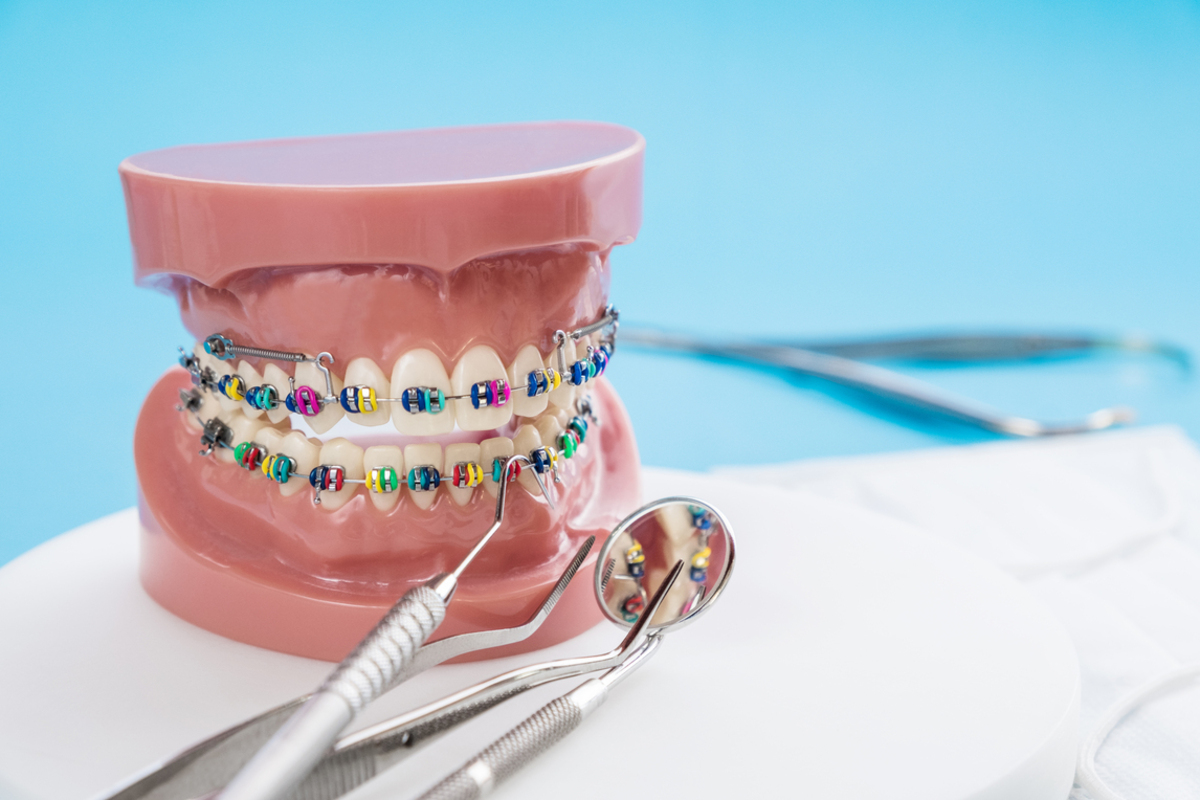Misaligned teeth can lead to various functional and psychological problems.
People with crooked or misaligned teeth are more reluctant to smile openly and tend to suffer from lower self esteem. When teeth do not align properly, they are more difficult to clean, leading to problems like decayed teeth, swollen and bleeding gums, and a foul-smelling mouth. When the upper and lower teeth do not align properly while biting, it can also lead to difficulty in chewing, and frequent cheek or lip biting, which in turn leads to repeated ulcers.

1. What are braces?
Misaligned teeth can be moved from their current position and guided into their ideal position with the help of fixed appliances known as braces. Traditional braces are generally made up of three components:
- A square bracket made out of metal, ceramic, or polycarbonate. This bracket is attached to each of your teeth using a special materiel known as composite.
- A wire that runs through a slot in all the brackets. This wire is formed and bent to gradually allow your teeth to move to their ideal positions.
- A rubber-band or a metal tie, which secures the wire onto the bracket.
Other options for orthodontic treatment include self-ligating braces, lingual braces, and clear aligners.
2. How do traditional braces work?
Once you decide to go ahead with the treatment, your orthodontist will begin by sticking brackets onto each individual tooth as required. These brackets are traditionally made of metal, but nowadays you can also opt for ceramic or polycarbonate brackets which match the color of your teeth, thereby making them very inconspicuous and hard to spot.
After the brackets are placed, a thin wire is slotted through all the brackets. This wire can either be made of stainless steel or nickel-titanium, depending on the requirement. These preformed wires apply gradual and gentle pressure via onto your teeth and guide them to their correct position.
The wire is secured to the brackets with the help of rubber bands or metal ties. These rubber bands are available in various colors. Self-ligating braces do not need such bands or ties, as the wire can be directly attached to the bracket.
3. What happens at every appointment?
Your orthodontist will call you for a check-up every few weeks, generally once every three to five weeks. After evaluating your progress, they will modify or change the wire as and when needed.
4. How long does the treatment last?
The total duration of time needed to align your teeth properly depends on how much your teeth need to be moved to get them into their correct position. The usual range is between one and 1.5 years.
5. Is the treatment painful?
With advances in bracket technology, modern-day orthodontic treatment is painless. However, while using traditional braces, you can expect a few initial problems like a feeling of fullness beneath your lips or a few ulcers on your lips or cheeks where the wire or brackets rub against the mouth. However, these are minor issues that are definitely manageable with orthodontic wax and time.
6. What care should I take during the treatment?
Oral hygiene
Maintaining good oral hygiene is very important during treatment with traditional braces. The brackets and wires are ideal sites for food particles to get stuck onto, leading to problems like swollen and bleeding gums, and cavities in teeth. Therefore, it is of paramount importance for the patient to maintain good oral hygiene.
Diet
Patients have to avoid any sort of hard and sticky food. Hard foods like various nuts can apply pressure onto your brackets, causing them to dislodge. Frequently dislodged brackets can increase the duration and cost of your treatment. Sticky foods make it more difficult to clean the areas around the brackets and wires. They are best avoided during the treatment.
Regular visits to the orthodontist
If you are regular with your appointments, the treatment can be finished faster. Also, issues like detached brackets can be taken care of promptly.
7. Drawbacks of traditional braces
Brackets are traditionally made using metal, which looks unsightly during the treatment and can be an issue for people with high social exposure or those who are extremely conscious about their looks. With the use of ceramic and polycarbonate brackets, this issue can be resolved to a great degree. However, the presence of a thin metal wire keeps the traditional braces from being completely invisible.
Traditional braces use bands or ties to secure the wire to the bracket. Thus, there is more friction between the components, thereby prolonging the treatment time when compared to self-ligating brackets.


Your thoughts on this